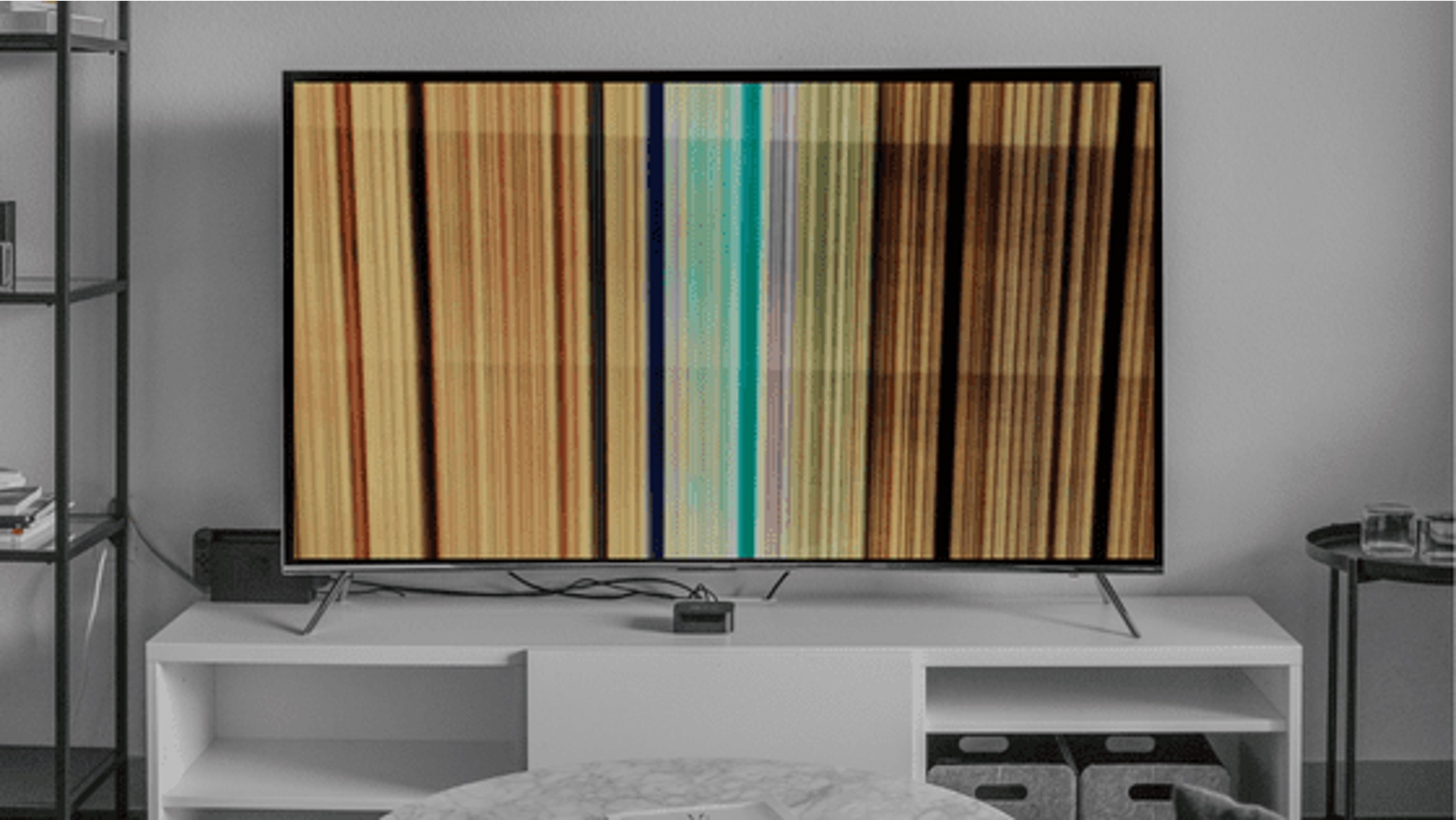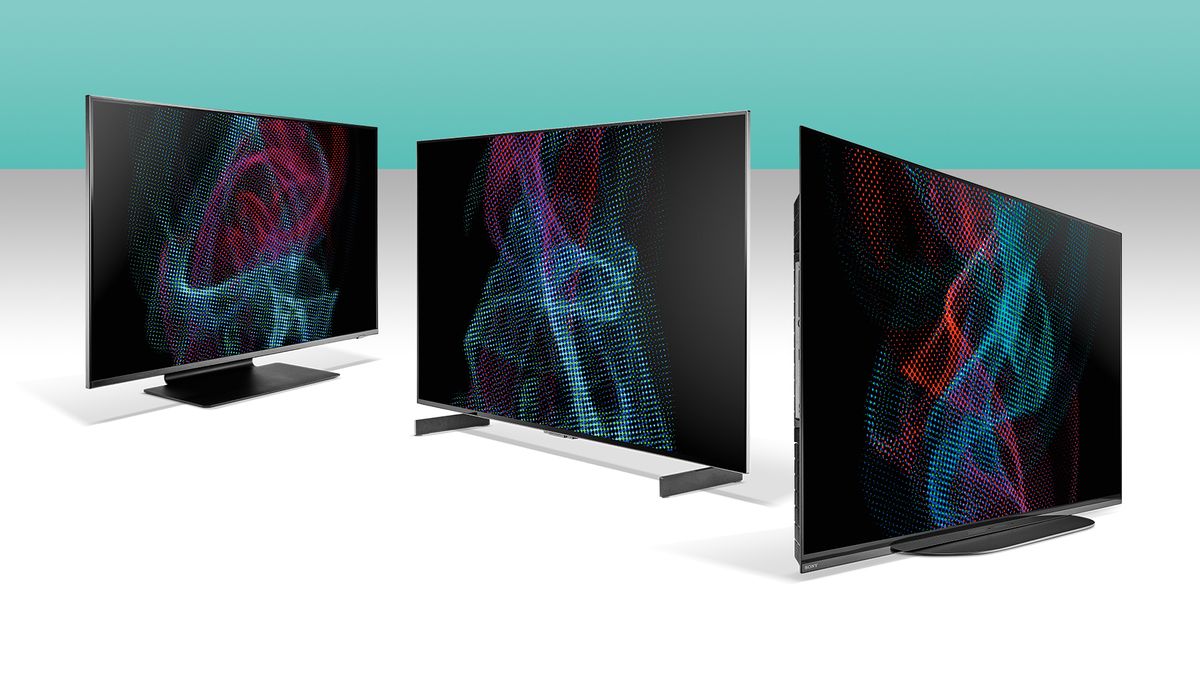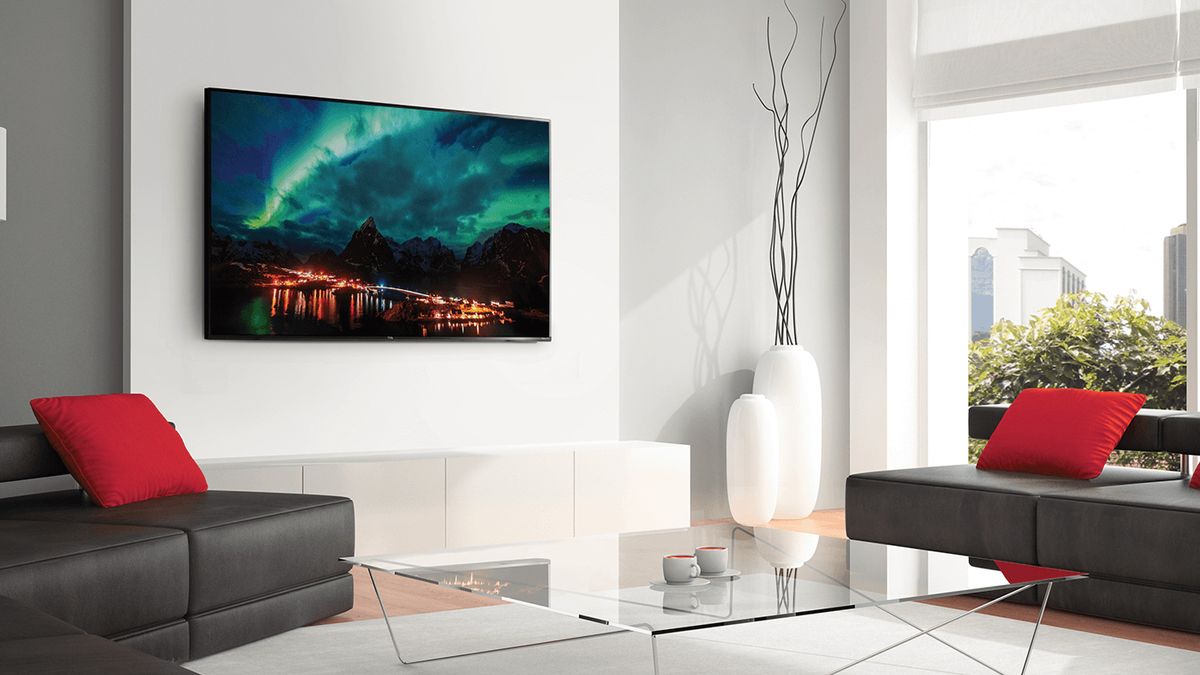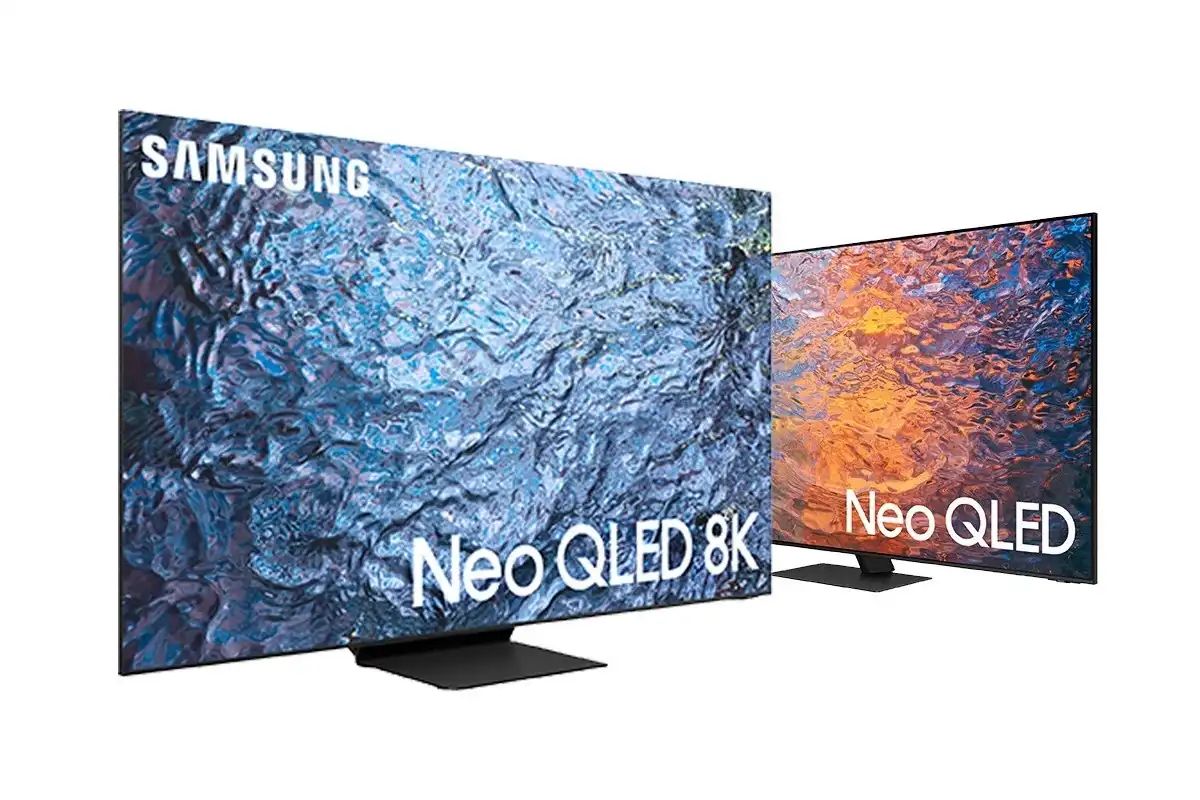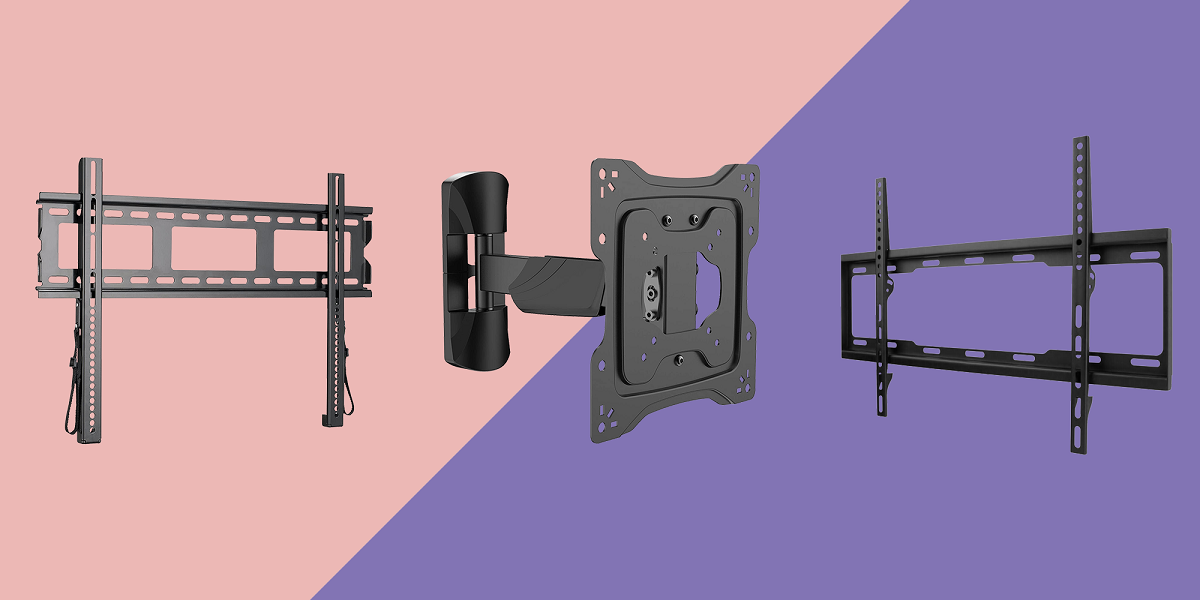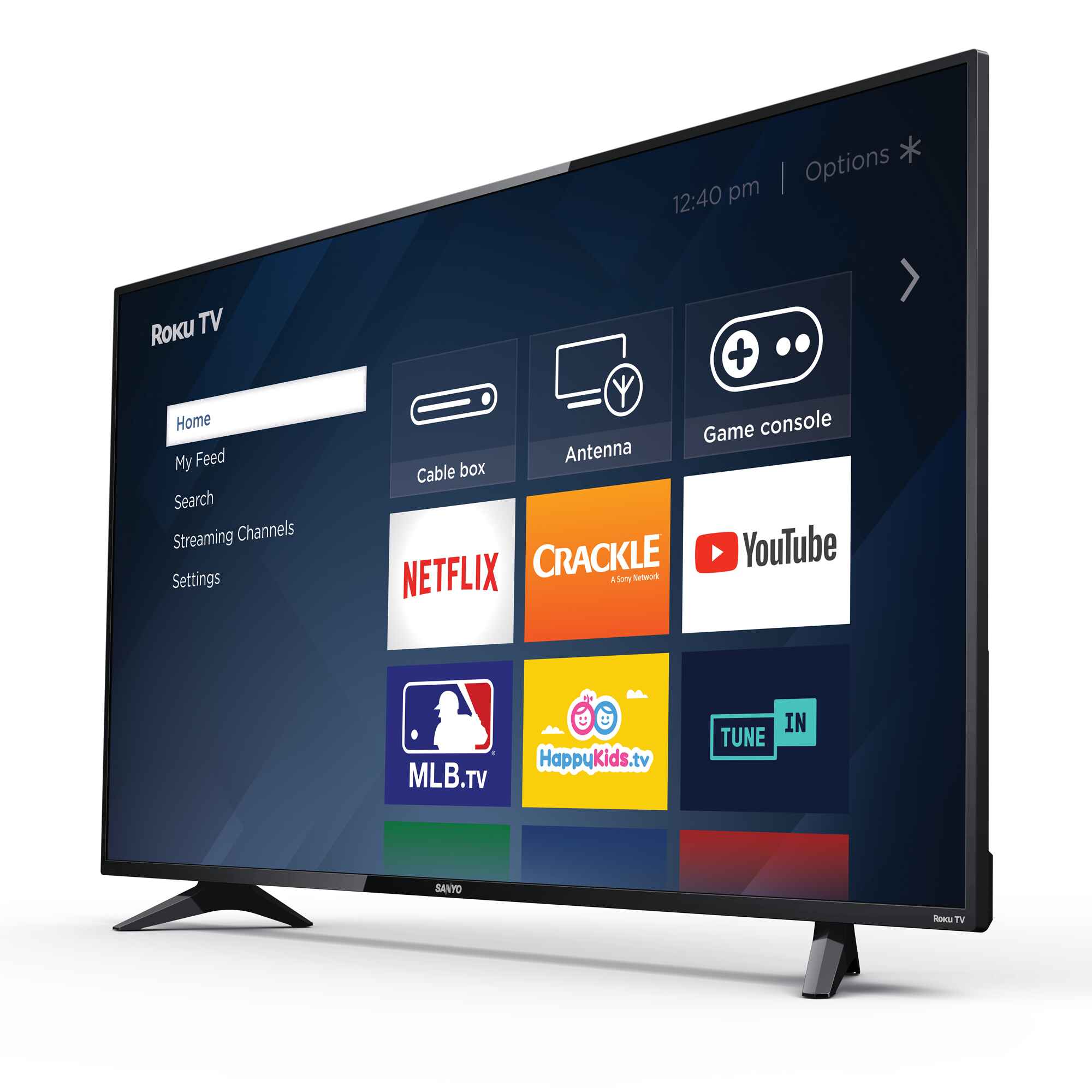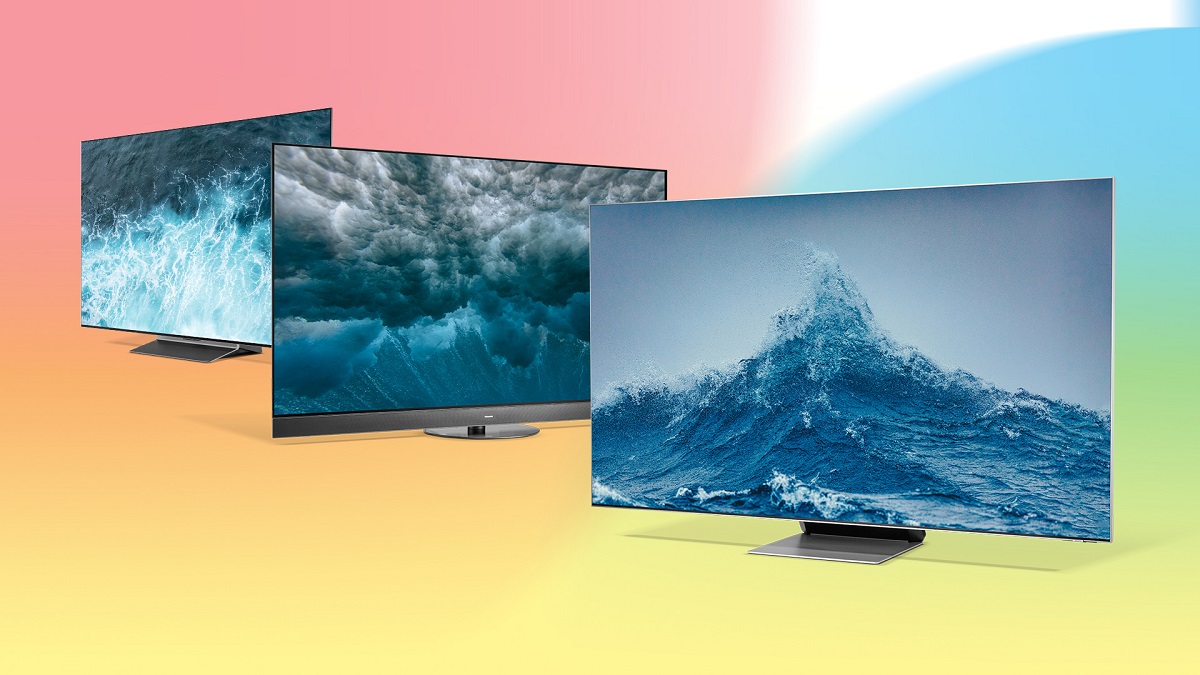Introduction
LCD LED TVs have revolutionized the way we experience television, offering crystal-clear images and vibrant colors. However, just like any electronic device, they can encounter issues over time. One common problem that users may face is the occurrence of vertical stripes on the screen. These thin lines can be distracting and greatly diminish the viewing experience.
To understand the causes of vertical stripes on an LCD LED TV, it is important to have a basic understanding of how these televisions work. LCD (liquid crystal display) technology uses a matrix of liquid crystal cells that can change the passage of light. LED (light-emitting diode) backlighting illuminates these cells, creating the images we see on the screen.
Vertical stripes, also known as banding, appear as thin lines that run from the top to the bottom of the display. They can be seen across the entire screen or in specific areas, depending on the underlying cause. Identifying the cause is crucial in order to effectively troubleshoot the issue and restore the TV’s optimal performance.
Understanding LCD LED TVs
LCD (liquid crystal display) LED (light-emitting diode) TVs have become the standard for high-quality home entertainment. These flat-panel televisions combine the advanced technology of liquid crystals with LED backlighting to produce stunning visuals.
At the heart of an LCD LED TV is the liquid crystal layer, located between two layers of glass. This layer contains millions of individual pixels, which consist of tiny liquid crystal cells. These cells can twist and untwist in response to an electric current, controlling the amount of light that passes through them.
The LED backlighting provides the illumination needed to display the images. Rather than using traditional fluorescent tubes, LED TVs use an array of light-emitting diodes. These LEDs are distributed evenly behind the liquid crystal layer, ensuring consistent lighting across the entire screen.
The combination of the liquid crystal layer and LED backlighting allows LCD LED TVs to produce vibrant colors and sharp details. By manipulating the properties of the liquid crystals, the TV can display different shades and hues. The LED backlighting ensures that these colors are accurately represented, resulting in a visually stunning image.
In addition to their impressive visual capabilities, LCD LED TVs also offer other advantages. They are lightweight and slim, making them easy to mount on walls or place on stands. They consume less energy compared to older TV technologies, which is not only good for the environment but also helps save on electricity bills.
Understanding how LCD LED TVs work is essential in troubleshooting any issues that may arise. By knowing the basic components and principles behind these TVs, users can effectively identify and resolve common problems, such as vertical stripes on the screen.
What are Vertical Stripes?
Vertical stripes, also known as banding, refer to thin lines that appear vertically on the screen of an LCD LED TV. These stripes can vary in intensity and thickness, and they can be seen across the entire display or in specific areas. They can greatly hinder the viewing experience and distract from the content being displayed.
Vertical stripes usually manifest as uniform lines that run from the top to the bottom of the screen. They can appear as shades of gray, black, or other colors, depending on the underlying issue. The presence of these stripes can be an indication of an underlying problem with the TV’s hardware or software.
It’s important to note that not all instances of vertical stripes are the same. There can be different causes for the appearance of these lines on the screen. Identifying the specific cause is crucial in order to effectively troubleshoot and resolve the issue.
In some cases, vertical stripes may be more prominent when viewing specific content, such as certain colors or patterns. This can be an indication that the issue lies with the TV’s display rather than the content being played. However, if the stripes are consistently visible across all types of content, it is likely related to a hardware or software problem.
Vertical stripes can greatly impact the overall viewing experience of an LCD LED TV. They can interfere with the clarity and detail of images and videos, making them less enjoyable to watch. Understanding the potential causes of these stripes is crucial in order to assess the severity of the issue and determine the necessary steps to resolve it.
Possible Causes of Vertical Stripes on an LCD LED TV
Vertical stripes on an LCD LED TV can be caused by a variety of factors. Identifying the underlying cause is essential in order to effectively troubleshoot and resolve the issue. Here are some possible causes:
- Panel Failure: A faulty or damaged LCD panel can result in the appearance of vertical stripes. This can occur due to manufacturing defects, physical damage, or wear and tear over time.
- T-Con Board Issues: The T-Con (Timing Control) board controls the timing and signals sent to individual pixels on the screen. If the T-Con board is malfunctioning or damaged, it can cause vertical stripes to appear.
- Loose or Damaged Connection: Faulty or loose connections between the internal components of the TV can lead to disruptions in the display, resulting in the appearance of vertical stripes.
- Firmware or Software Problems: Outdated or corrupted firmware or software can cause display issues, including the occurrence of vertical stripes. Updating the TV’s firmware or software can often resolve these problems.
- Power Supply Problems: Inadequate power supply, voltage fluctuations, or issues with the TV’s power source can affect the proper functioning of the display, leading to the appearance of vertical stripes.
- Environmental Factors: External factors such as electromagnetic interference or exposure to extreme temperatures or humidity can impact the performance of an LCD LED TV, potentially causing vertical stripes to appear.
It is important to note that these are just some of the possible causes, and a thorough diagnosis may be required to accurately identify the underlying issue.
Next, we will explore some troubleshooting steps that can help alleviate the problem of vertical stripes on a Samsung 46 Inch LCD LED TV.
Panel Failure
Panel failure is one of the potential causes of vertical stripes on an LCD LED TV. The LCD panel, also known as the display panel, is composed of millions of tiny liquid crystal cells that are responsible for producing the images on the screen. If there is a defect or damage to the panel, it can result in the appearance of vertical stripes.
In some cases, panel failure may be due to manufacturing defects, where certain areas of the panel can malfunction or exhibit abnormalities. Physical damage, such as impact or pressure, can also cause the panel to fail and result in the appearance of vertical stripes.
Unfortunately, panel failure generally requires professional intervention and may involve replacing the entire panel. This can be an expensive repair, and it is usually more cost-effective to replace the TV altogether if the panel is the cause of the vertical stripes.
If you suspect that panel failure is the reason behind the vertical stripes on your Samsung 46 Inch LCD LED TV, it is recommended to contact the manufacturer or a certified technician for assistance. They can provide further guidance and determine the best course of action to address the issue.
It is worth noting that panel failure is relatively uncommon, and other causes, such as software issues or loose connections, are more frequently responsible for the appearance of vertical stripes. Therefore, it is advisable to troubleshoot other possible causes before concluding that panel failure is the culprit.
T-Con Board Issues
The T-Con (Timing Control) board is a crucial component in an LCD LED TV responsible for controlling the signals and timing sent to each pixel on the screen. If there are issues with the T-Con board, it can lead to the appearance of vertical stripes on the display.
Various problems can arise with the T-Con board, including faulty components, damaged circuitry, or loose connections. These issues can disrupt the proper transmission of signals, causing vertical stripes to appear on the screen.
One common T-Con related problem is known as “TAB bond failure.” TAB (Tape Automated Bonding) refers to the connection between the T-Con board and the glass substrate of the LCD panel. If the TAB bond fails, it can result in vertical stripes or other display abnormalities.
Resolving T-Con board issues requires technical expertise and should be handled by a qualified technician. They will be able to diagnose the specific problem and determine whether the T-Con board needs to be repaired or replaced.
In some cases, simply reseating the T-Con board by disconnecting and reconnecting the cables can help resolve minor connection issues. However, more complex problems may necessitate a complete T-Con board replacement.
It is important to note that T-Con board issues are just one potential cause of vertical stripes on an LCD LED TV. It is recommended to rule out other possible causes before concluding that the T-Con board is to blame. Troubleshooting other components and seeking professional assistance can help identify the true underlying issue.
Loose or Damaged Connection
Another potential cause of vertical stripes on an LCD LED TV is a loose or damaged connection between the internal components of the television. If the cables connecting the different parts of the TV are not securely attached or if they are damaged, it can lead to display abnormalities, including the appearance of vertical stripes.
Loose connections can occur due to various reasons, such as faulty cable connections during manufacturing or accidental jostling of the TV. Over time, these loose connections can worsen and result in intermittent or persistent vertical stripes on the screen.
Damaged cables, such as HDMI or ribbon cables, can also cause display issues. Physical damage, such as bending or pinching the cables, can disrupt the signal transmission and lead to visual abnormalities.
To address this issue, it is recommended to check and ensure that all connections are securely plugged in. Begin by inspecting the cables, looking for any signs of damage or wear. If any cables appear damaged, they should be replaced to restore proper signal transmission.
Reconnecting the cables is another troubleshooting step that can help resolve loose connection issues. Disconnecting and reconnecting the cables can ensure a secure and proper connection.
If the issue persists after checking and securing the connections, it may be necessary to seek professional assistance. A technician will have the expertise to diagnose and resolve any complex connection problems that might be causing the vertical stripes.
Keep in mind that loose or damaged connections are just one of the potential causes of vertical stripes. It is important to rule out other possible causes and pursue further troubleshooting if needed to identify and address the underlying issue.
Firmware or Software Problems
Firmware and software play a crucial role in the proper functioning of an LCD LED TV. If there are issues with the firmware or software, it can result in various display anomalies, including the appearance of vertical stripes on the screen.
Outdated firmware is a common cause of software-related problems. Manufacturers regularly release firmware updates to improve performance, fix bugs, and address compatibility issues. If your TV’s firmware is outdated, it may not be able to properly interpret the incoming signals, leading to vertical stripes or other display abnormalities.
Similarly, corrupted or incompatible software can interfere with the TV’s ability to display images accurately. Problems with the video processing algorithms or image scaling can result in distorted or striped images.
To address firmware or software-related issues, it is recommended to check for available firmware updates from the manufacturer’s official website. If an update is available, follow the provided instructions to download and install it on your TV.
In addition to updating the firmware, performing a factory reset can help resolve software-related issues. This can help restore the TV to its default settings and clear any corrupted software data.
If you have recently installed any apps or made changes to the TV’s settings, consider uninstalling or reverting those changes to determine if they are contributing to the appearance of vertical stripes.
If the problem persists after updating the firmware and resetting the TV, it may indicate a more complex software issue. In such cases, contacting the manufacturer’s support or seeking professional assistance is recommended to diagnose and resolve the problem.
Remember, firmware or software problems are just one of the potential causes of vertical stripes. It is important to eliminate other potential causes and troubleshoot thoroughly before attributing the issue to firmware or software.
Power Supply Problems
The power supply is responsible for providing the necessary electricity to different components of the LCD LED TV. If there are issues with the power supply, it can lead to display abnormalities, including the appearance of vertical stripes.
Inadequate power supply or voltage fluctuations can disrupt the functioning of the TV’s internal components, including the display. Insufficient power can result in improper signal transmission and lead to visual anomalies.
Power supply problems can arise due to various factors, such as faulty power cables, damaged power boards, or issues with the electrical outlet. A damaged power board can prevent the TV from receiving the proper power supply, causing the appearance of vertical stripes on the screen.
Resolving power supply problems may involve several troubleshooting steps. Begin by checking the power cable and ensuring it is securely connected to both the TV and the electrical outlet. If the cable appears damaged or worn out, it should be replaced.
Similarly, inspect the power board for any signs of damage or burning. If there are visible issues, such as blown capacitors or burnt components, the power board may need to be replaced or repaired by a qualified technician.
If the TV is connected to a power strip or surge protector, try directly connecting it to a known working electrical outlet to rule out any issues with the external power source.
It is worth noting that power supply problems can sometimes be tricky to diagnose and solve. If you are not comfortable working with electronics or if the issue persists after performing basic troubleshooting steps, it is recommended to seek professional assistance to address power supply-related issues.
Keep in mind that power supply problems are just one of the potential causes of vertical stripes. Make sure to rule out other potential causes and perform comprehensive troubleshooting before attributing the issue solely to power supply problems.
Environmental Factors
Environmental factors can also contribute to the appearance of vertical stripes on an LCD LED TV. These external influences can affect the performance of the TV, leading to display abnormalities.
One environmental factor that can impact the TV’s display is electromagnetic interference (EMI). External devices or electrical sources emitting strong electromagnetic waves can interfere with the TV’s signal transmission, resulting in the appearance of vertical stripes.
Placement of the TV matters as well. If the TV is situated too close to sources of electromagnetic interference, such as large speakers or other electronics, it can increase the likelihood of EMI-related issues. Similarly, placing the TV near strong magnetic fields can also affect its performance.
Extreme temperatures or excessive humidity levels can also impact the performance of an LCD LED TV. High temperatures can cause components to overheat, potentially leading to display abnormalities. Excessive humidity can result in moisture buildup within the TV, causing short circuits or other issues that may manifest as vertical stripes on the screen.
To address environmental factors, it is important to ensure proper placement and ventilation for the TV. Keep the TV away from potential sources of electromagnetic interference and maintain a suitable temperature and humidity level in the room.
If electromagnetic interference is suspected, try temporarily relocating any nearby devices or electronics to see if the problem improves.
In areas with high humidity, consider using a dehumidifier to regulate moisture levels or employ other methods to reduce humidity in the room.
If the issue persists and environmental factors are suspected to be the cause of the vertical stripes, professional assistance may be required to further assess and mitigate the problem.
Remember that while environmental factors can contribute to display issues, they are not always the sole cause. It is important to rule out other potential causes and perform thorough troubleshooting before attributing the problem solely to environmental factors.
Troubleshooting Vertical Stripes on a Samsung 46 Inch LCD LED TV
Experiencing vertical stripes on your Samsung 46 Inch LCD LED TV can be frustrating, but there are several troubleshooting steps you can take to resolve the issue. Here are some recommended troubleshooting methods:
- Perform a Power Cycle: Start by turning off the TV and unplugging it from the power source. Leave it unplugged for about 5 minutes to allow any residual electricity to dissipate. Then, plug it back in and turn it on. This power cycle can help reset the TV and resolve minor glitches that may be causing the vertical stripes.
- Check and Secure Connections: Ensure that all cables connecting the TV to external devices, such as satellite or cable boxes, are securely plugged in. Also, check internal connections, such as the cables connecting the T-Con board, panel, or power supply. If any cables appear loose or damaged, reconnect or replace them accordingly.
- Update Firmware or Software: Check for any available firmware or software updates for your Samsung TV. Visit the Samsung support website and search for your TV model to find the latest firmware. Follow the provided instructions to download and install the update on your TV. This can help resolve software-related issues that may be causing the vertical stripes.
- Reset the TV Settings: If you have made custom changes to your TV’s settings, perform a factory reset to restore the TV to its default settings. This can help eliminate any customized settings that may be contributing to the appearance of vertical stripes. Refer to the user manual or Samsung’s website for instructions on how to perform a factory reset.
- Contact Samsung Support: If the above troubleshooting steps do not resolve the issue, or if you suspect a hardware problem, it is recommended to contact Samsung Support for further assistance. They can provide specific guidance based on your TV model and arrange for professional repair or service if needed.
It’s worth noting that these troubleshooting steps are general recommendations. The specific steps or instructions may vary based on your Samsung 46 Inch LCD LED TV model or regional variations. Always refer to the user manual provided with your TV or consult the official Samsung support resources for accurate and up-to-date information.
By following these troubleshooting steps, you can increase the chances of resolving the issue of vertical stripes on your Samsung 46 Inch LCD LED TV and restore the optimal viewing experience.
Perform a Power Cycle
Performing a power cycle is one of the first troubleshooting steps you should take when experiencing vertical stripes on your Samsung 46 Inch LCD LED TV. This simple process can help resolve minor glitches and restore the TV to its normal functioning. Here’s how to perform a power cycle:
- Turn off the TV by pressing the power button on the remote control or on the TV itself.
- Unplug the TV from the power source. This means removing the power cord from the wall outlet or power strip.
- Leave the TV unplugged for at least 5 minutes. This duration allows any residual electricity to discharge from the TV’s capacitors and components.
- While the TV is still unplugged, press and hold the power button on the TV or the remote control for about 10 seconds.
- After 5 minutes have passed, plug the TV back into the power source.
- Press the power button to turn on the TV. Wait for the TV to fully power up and check if the vertical stripes have disappeared.
The power cycle process essentially resets the TV by removing any temporary data or glitches that may have been causing the vertical stripes. It can help the TV recalibrate and establish a stable connection with the input source, eliminating any display abnormalities.
If the vertical stripes persist after performing a power cycle, it is recommended to proceed with other troubleshooting steps or seek further assistance from Samsung Support.
Remember that a power cycle is a basic troubleshooting step and may not resolve more complex issues. However, it is a good starting point and should be attempted before moving on to more advanced troubleshooting methods.
Check and Secure Connections
Checking and securing connections is an essential step in troubleshooting vertical stripes on your Samsung 46 Inch LCD LED TV. Loose or damaged connections can disrupt the signal transmission, leading to display abnormalities. Follow these steps to ensure your connections are properly secured:
- Inspect all cables connected to the TV. This includes HDMI cables, AV cables, and any other input or output cables. Ensure that they are securely plugged into their respective ports on both the TV and the external devices, such as cable or satellite boxes.
- If you notice any loose connections, unplug the cable and firmly plug it back in. Be sure to push the connector all the way into the port to establish a secure connection.
- Check for any signs of damage, such as cuts, frays, or bent pins, on the cables. Damaged cables can interfere with the proper transmission of signals. If you find any damaged cables, replace them with new ones.
- Inspect internal connections, such as the cables connecting the T-Con board, panel, or power supply. Carefully unplug and re-plug these cables to ensure a secure connection.
- If you have recently added new devices or made changes to your setup, double-check the compatibility of the cables and devices. Incompatible or faulty cables can cause display abnormalities such as vertical stripes.
By verifying and securing the connections, you can eliminate any potential issues arising from loose or damaged cables. Sometimes, even a slight displacement can disrupt the signal transmission and cause display anomalies.
It is important to check all connections, both external and internal, to ensure a complete and secure connection throughout the TV system. Loose connections are a common cause of display issues, and securing them can often resolve the problem of vertical stripes.
If the vertical stripes persist after securing the connections, continue troubleshooting using the other recommended steps or consider seeking assistance from Samsung Support.
Remember to handle the cables and connections with care to avoid any further damage. Always refer to the user manual or consult official Samsung resources for specific instructions related to your TV model.
Update Firmware or Software
Updating the firmware or software of your Samsung 46 Inch LCD LED TV is an important troubleshooting step to address vertical stripes and other display abnormalities. Outdated or corrupted firmware can cause compatibility issues and result in visual distortions. Here’s how to update the firmware or software:
- Start by visiting the official Samsung support website.
- Search for your TV model using the provided search bar or by navigating through the product support section.
- Look for the “Downloads” or “Support” section specific to your TV model.
- Check for any available firmware or software updates for your TV.
- Download the latest firmware or software update onto a USB flash drive or follow the provided instructions for downloading directly to your TV, if available.
- If using a USB flash drive, insert it into the USB port on your TV.
- Access the TV’s menu and navigate to the “Settings” or “Support” section.
- Find the “Software Update” option and select it.
- Choose the “Update Now” or “Update via USB” option, depending on the update method you’re using.
- Follow the on-screen prompts to initiate the update process.
- Allow the TV to complete the update. Do not turn off or unplug the TV during this process.
- Once the update is finished, the TV will restart, and the new firmware or software will be installed.
Updating the firmware or software can fix bugs, improve performance, and enhance compatibility with external devices. It can also address software-related issues that may be causing the appearance of vertical stripes.
Make sure to follow the instructions provided by Samsung during the update process and use the appropriate update file for your specific TV model. Using incorrect firmware or software can lead to further complications.
If the vertical stripes persist after updating the firmware or software, proceed with other troubleshooting steps or seek further assistance from Samsung Support.
Regularly checking for and installing firmware or software updates can help maintain the optimal performance of your Samsung 46 Inch LCD LED TV and prevent potential display issues in the future.
Reset the TV Settings
If you’re still experiencing vertical stripes on your Samsung 46 Inch LCD LED TV after attempting other troubleshooting steps, resetting the TV settings may help resolve the issue. Resetting the TV will restore the settings to their factory defaults, eliminating any customized configurations that could be contributing to the display abnormalities. Here’s how to reset the TV settings:
- Access the TV’s menu by pressing the “Menu” button on the remote control.
- Navigate to the “Settings” or “System” section using the arrow keys.
- Find the “Reset” option or a similar setting. The specific location may vary depending on your TV model.
- Select “Reset” and choose “Return to Factory Settings,” “Factory Reset,” or a similar option.
- A confirmation prompt will appear on the screen. Confirm your selection to proceed with the reset process.
- Wait for the TV to reset and restart. This may take a few minutes.
- Once the TV has restarted, follow the on-screen prompts to set up the TV again. You will need to go through the initial setup process, such as selecting the language, scanning for channels, and connecting to a network.
Resetting the TV settings removes any customized picture settings, sound settings, or network configurations that may be contributing to the appearance of vertical stripes. It allows the TV to start fresh with default settings that are optimized for the best performance.
After the reset, check if the vertical stripes have disappeared. If the issue persists, consider seeking further assistance from Samsung Support or exploring additional troubleshooting options.
Remember that resetting the TV settings should be done with caution, as it erases any customizations you have made. Make sure to note down any important settings or configurations before performing the reset.
Resetting the TV settings can be an effective troubleshooting step to address vertical stripes caused by incorrect or conflicting settings. However, if the problem continues, it may indicate a hardware issue or a more complex software problem that requires professional intervention.
Contact Samsung Support
If you have tried the previous troubleshooting steps and the issue of vertical stripes on your Samsung 46 Inch LCD LED TV persists, it is recommended to contact Samsung Support for further assistance. Their expert technicians can provide specific guidance and help resolve the problem. Here’s how to get in touch with Samsung Support:
- Refer to the documentation that came with your TV to find the contact information for Samsung Support in your region.
- Visit the official Samsung website and navigate to the Support or Contact Us section. Look for the appropriate contact options for TV support.
- Call the Samsung customer support phone number provided for your country or region. Be prepared to provide details about your TV model and a description of the issue you are facing.
- If available, use the live chat function on the Samsung website to initiate a chat session with a support representative. This method allows for quick and direct communication.
- Explain the issue of vertical stripes and follow any troubleshooting steps or instructions provided by the support representative.
- Depending on the nature of the problem, the representative may assist you remotely, recommend a service appointment, or suggest additional troubleshooting options.
Contacting Samsung Support ensures that you receive expert advice tailored to your TV model and specific issue. Their knowledgeable support team will be able to provide guidance on the best course of action, whether it involves further troubleshooting, arranging a service visit, or exploring warranty options.
Remember to have your TV model number and other relevant details ready when contacting support. This information will assist the support team in better understanding your situation and providing the most accurate assistance.
If your TV is under warranty, be sure to inquire about warranty coverage and repair options. Samsung Support can guide you through the warranty process and help arrange any necessary repairs or replacements.
Contacting Samsung Support is particularly recommended if the previous troubleshooting steps have not resolved the issue, as it may indicate a more complex hardware or software problem that requires professional attention.







